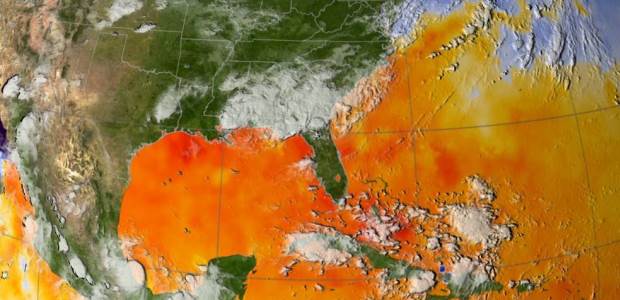
Researchers Find Link Between Amazon Wildfires and Atlantic Hurricanes
"Hurricane Katrina is, indeed, part of this story," said UCI Earth system scientist James Randerson, senior author on the paper. "The ocean conditions that led to a severe hurricane season in 2005 also reduced atmospheric moisture flow to South America, contributing to a once-in-a-century dry spell in the Amazon."
Researchers from the University of California, Irvine and NASA have found "a remarkably strong link between high wildfire risk in the Amazon basin and the devastating hurricanes that ravage North Atlantic shorelines," the space agency announced Aug. 24. Their findings are published in the journal Geophysical Research Letters as the 10th anniversary of Hurricane Katrina's landfall at New Orleans and the Gulf Coast, which President Obama will attend.
"Hurricane Katrina is, indeed, part of this story," said UCI Earth system scientist James Randerson, senior author on the paper. "The ocean conditions that led to a severe hurricane season in 2005 also reduced atmospheric moisture flow to South America, contributing to a once-in-a-century dry spell in the Amazon. The timing of these events is perfectly consistent with our research findings."
According to NASA, lead author Yang Chen "discovered that in addition to the well-understood east-west influence of El Niño on the Amazon, there is also a north-south control on fire activity that is set by the state of the tropical North Atlantic. The North Atlantic has two modes. In years of high numbers of hurricanes and high fire risk, warm waters in the North Atlantic help hurricanes develop and gather strength and speed on their way to North American shores. They also tend to pull a large belt of tropical rainfall – known as the Intertropical Convergence Zone – to the north, Chen said, drawing moisture away from the southern Amazon. As a consequence, ground water is not fully replenished by the end of rainy season, so coming into the next dry spell, when there is less water stored away in the soils, the plants can't evaporate and transpire as much water out through their stems and leaves into the atmosphere. The atmosphere gets drier and drier, creating conditions where fires can spread rapidly three to six months later. Ground-clearing fires set by farmers for agriculture or new deforestation can easily jump from fields to dense forests under these conditions."
"Understory fires in Amazon forests are extremely damaging, since most rainforest trees are not adapted to fire," said co-author Douglas Morton at NASA's Goddard Space Flight Center in Greenbelt, Md. "The synchronization of forest damages from fires in South America and tropical storms in North America highlights how important it is to consider the Earth as a system."